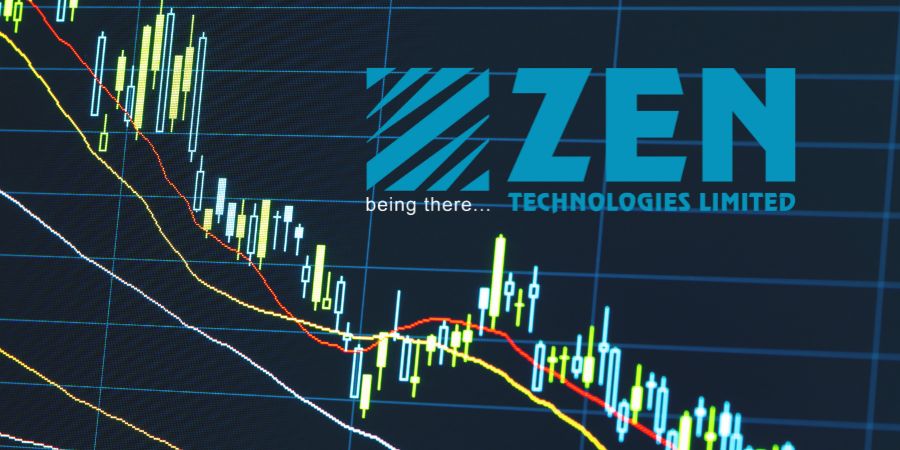Zen Technologies share price saw a dramatic decline during the week, falling by almost 9% in a span of just 48 hours after the Q1 FY26 earnings announcement by the company. The stock that was recently seeing new highs dipped from nearly ₹1,690 to almost ₹1,540, causing investor anxiety and forcing a reevaluation of its short-term prospects.
The dramatic fall in Zen Technologies share was mainly initiated by a whopping 48% quarter-on-quarter revenue fall, wherein overall income fell from ₹349 crore in Q4 to ₹180 crore in Q1. Net profit was at ₹53 crore—decent but far short of the market’s expectations in view of the past quarter’s performance. This sudden slowdown, even though profitability has been maintained, has given investors a reason to wonder whether the company’s momentum is slowing down.
Valuation issues are also rising. Zen Technologies is now priced at a P/E of more than 55, which is significantly above many of its mid-cap tech and defence industry peers. While high growth stocks do tend to warrant premium valuations, the weaker quarter recently reported by the company has rendered this premium risky in the near term. The price-to-book value of close to 8x puts further pressure on an already extended valuation.
Long-term fundamentals are not affected by this. Zen Technologies has a dominant market position in defence simulation technology and has diversified proactively into related fields such as unmanned air systems, robotics, and AI-based military training. The company is debt-free, has stable return ratios, and is growing investments in R&D—something that continues to underpin long-term growth.
But the sharp fall in Zen Technologies share price indicates market responsiveness to earnings volatility and high valuation multiples. With promoter holding marginally lower in recent years and FII/DII participation modest, any downside quarterly surprise tends to generate disproportionate reactions.
Investors will now closely monitor for order flows, strategic alliances, and direction in future quarters. The decline can be a good correction or an indication that the stock’s bull run has reached a phase of prudence.
Read Also: Arihant Capital Recommends Buying Waaree Energies, Advises Selling Suzlon and Reliance Power




